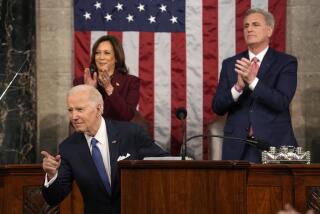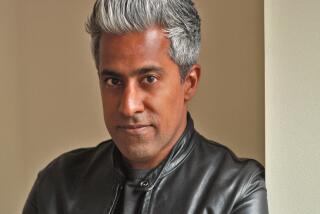McManus: Obama sides with the 99%
Conservatives were quick to accuse President Obama of embracing class warfare in his speech last week in Osawatomie, Kan. And liberal Democrats were thrilled to see a hint of the populist president they had hoped they were voting for in 2008.
The polarized reactions suggest that Obama’s speech succeeded in one of its goals: to frame the 2012 election as a clear choice between two philosophies, a contest he might be able to win, instead of a referendum on his own unhappy economic record.
But elections are won in the center, as Obama himself showed in 2008, when he attracted millions of independent voters with a now-outmoded message of post-partisan harmony. And it remains to be seen how the president’s new populism will play with independents.
Obama has struggled with two problems this fall as he prepared to launch his campaign for reelection. One, of course, is the still wretched state of the economy, something he can do little in the short run to improve. But the other problem is one he should be able to fix: the haziness of his own vision.
After a year of alternating clashes with Congress’ Republican leaders and attempts to meet them halfway, even Obama’s Democratic supporters weren’t sure what he stood for.
In the parlance of political image makers, Obama has forgotten to provide a narrative, an explanation of how we got here and how he plans to get us out.
His Kansas speech was an attempt to fill in the missing story line, and to restart his conversation with unhappy voters.
His message — that Main Street has been squeezed by Wall Street and that the future will be even bleaker unless we raise taxes on the wealthy and invest in education, science and infrastructure — isn’t new. But the president put it in a sharper, more moralistic framework than he has offered during most of his first three years in office.
The political strategy behind this approach was transparent. Obama was seeking both to reassure his dispirited Democratic base and to enlarge it by appealing to everyone who agrees with the Occupy Wall Street movement that the current economy is inequitable. This isn’t a fringe sentiment. Polls show that about two-thirds of Americans think the distribution of wealth is unfair, including a big majority of independents as well as Democrats.
That’s why so much of the speech was given to characterizing (and occasionally exaggerating) Republican positions as favoring the 1% over the 99%. “Their philosophy is simple: We are better off when everybody is left to fend for themselves and play by their own rules,” Obama charged.
But the strategy could have pitfalls.
“I think they’re taking Occupy Wall Street a little too literally,” said William A. Galston, who served as President Clinton’s chief domestic policy adviser.”The American middle class is much more interested in its own circumstances than in how the wealthy are doing. The reason people are concerned is not because the 1% are doing so well; it’s because the middle class is doing so badly — and it’s not clear that socking it to the 1% will solve that problem.”
In his day, Clinton also denounced “the forces of greed,” but he was careful to connect that populism to a strategy for promoting economic growth and a promise to make government leaner and more efficient. Obama mentioned those elements in Osawatomie, but only briefly, and they were drowned out by his denunciations of income inequality.
Indeed, the most interesting part of Obama’s message didn’t get much news coverage: his argument that unequal income is hurting economic growth.
“When middle-class families can no longer afford to buy the goods and services that businesses are selling …. it drags down the entire economy,” he argued.
To be fair, Obama has proposed a raft of federal initiatives to promote long-term economic growth, most recently in the jobs bill he unveiled in September. They just haven’t gone anywhere in the face of Republican opposition. And, in his speech, he called for increased federal spending on education, science and transportation, but he offered no details.
So for voters outside the liberal Democratic fold, Obama’s Osawatomie framework deserves a grade of incomplete.
He still has almost a year to fill in the blanks, though. And White House aides say that’s exactly what he plans to do.
His challenge is to take the narrative of complaints he outlined last week and do what Occupy Wall Street has failed to do: offer a program for addressing them that most Americans can embrace.
Having reassured liberals that he’s still one of them, Obama must now reassure independents that he’s on their side too — and that he’s more interested in stoking economic growth than resentment.
More to Read
A cure for the common opinion
Get thought-provoking perspectives with our weekly newsletter.
You may occasionally receive promotional content from the Los Angeles Times.











